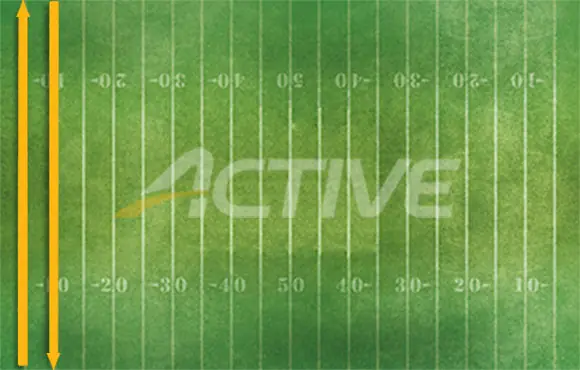Run strides after an easy distance run, and start with four of them. You can increase to six after 2 to 3 weeks if you'd like, but it's not necessary. If you have a nice field nearby, you can do them barefoot to strengthen your lower legs and help prevent injuries like plantar fasciitis.
PR Principle #2: A Substantial Long Run
Beginners often work on running a few days a week until it's comfortable for them. The next step is to add a long run to your weekly schedule that's 20 to 50 percent longer than your average run of the week.
More: 7 Mistakes to Avoid on Your Long Runs
For distance runners, long runs are one of the most important workouts you can do. Even for the 5K, which is mostly endurance-oriented, a long run is essential to realizing your potential and getting faster. Long runs boost your endurance, develop a more extensive capillary network in your legs, increase the number of energy-producing mitochondria in your cells, and make it easier to run faster, for longer.
Most beginners are hampered by a low level of endurance. While many can run a really fast pace, the problem is holding that pace for a long period of time. That's where long runs can help.
More: How Beginning Runners Can Improve Endurance
Be conservative and start by adding 1 to 2 miles to your longest run every 2 to 3 weeks. This will help you not only increase your long run, but also your weekly mileage.
More: Avoid a Running Injury With the 10 Percent Rule
PR Principle #3: A Weekly Workout
Good runners always include a more structured workout in their weekly 5K training. If you've just been running easy or doing a few "fast-finish" runs, now is the time to add a faster workout to your schedule.
After a week or two of running strides, you're ready to start an introductory workout like a fartlek (don't laugh—it's Swedish for "speed play"). Fartleks can be as unstructured as you'd like—run hard between each telephone pole or tree, and rest in between. These workouts are easier to understand when they're more formal.
More: 3 Fartlek Workouts to Increase Pace
Here's a favorite that I use with my runners: six repetitions of one minute, with a two-minute easy jog in between each interval. The hard one-minute intervals are run at a faster pace than you're used to, maybe your 5K or 10K goal pace.
Once you've transitioned into a weekly workout, you can begin doing tempo runs and more 5K specific workouts.
These simple changes to your training will help produce dramatic breakthroughs in your next 5K. Soon you'll have a new personal best and set your sights on your next goal, like a 10K or half marathon.
More: 9 Essential 5K Race-Day Tips for Beginners
 Sign up for your next 5K or move up to a 10K.
Sign up for your next 5K or move up to a 10K. - 2
- of
- 2
About the Author

Get ACTIVE on the Go


Couch to 5K®
The best way to get new runners off the couch and across the finish line of their first 5K.
Available for iOS | Android






Discuss This Article